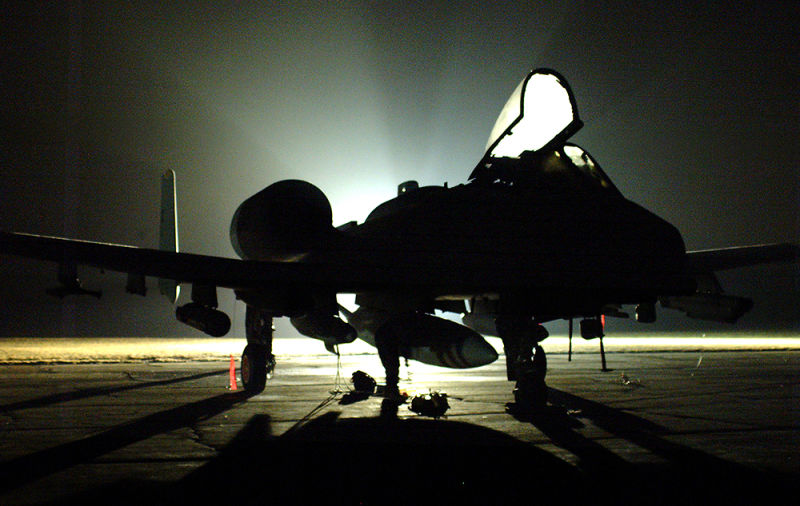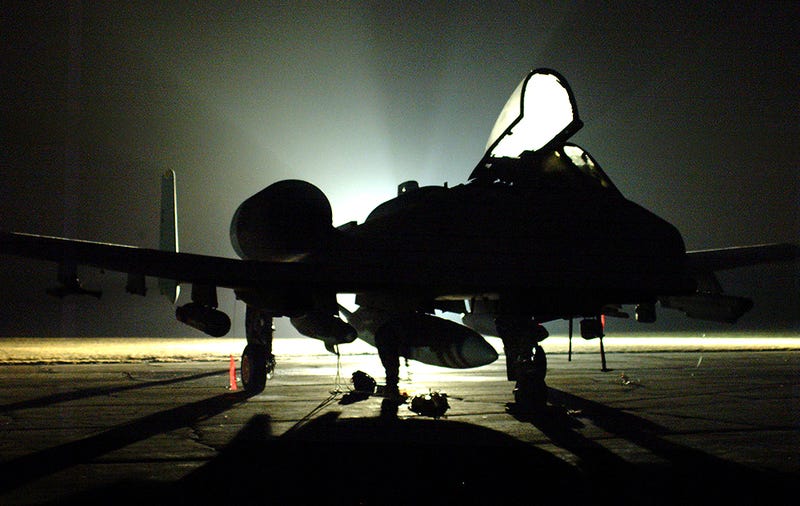
The fight to kill the A-10 Warthog rages on in Washington after the U.S. Air Force tried to sneak-retire the incredibly useful attack jet following a failure to get Congressional approval to end it outright. Now the Air Force’s shell game includes a potential A-10 replacement, dubbed the A-X.
http://foxtrotalpha.jalopnik.com/the-air-force-…
Here’s what FlightGlobal reported recently:
Advertisement
Lt Gen James “Mike” Holmes, USAF deputy chief of staff for strategic plans and requirements, says it’s the first step in the long process of planning and budgeting for an aircraft that might someday replace the hardy Fairchild Republic A-10. If approved by the air force chief of staff, a future close-air-support platform will be considered by a “planning choices” panel this fall for possible inclusion in the service’s five-year budget plan for fiscal years 2018-2022.
“We are developing that draft requirements document and staffing it around the air force now,” Holmes said after an Air Force Association forum in Washington DC on 7 April. “When it’s ready, we’ll compare that to what we have available, compare it to keeping the A-10, and compare it to what it would take to replace [the A-10] with another airplane.”
Of course, none of this makes any sense at all, and is contradictory to the military’s own claims that the F-35 and other platforms can do the A-10’s job. What you’re seeing here is just another distraction tactic being used by the Air Force to kill the Warthog once and for all.
The A-10 is an aircraft the branch has long despised, one they have been desperately trying to unload over the last half decade. The Air Force says the A-10 has only niche capabilities and that they need its manpower and the savings gained by its retirement to support the struggling F-35 program. But replacing the Warthog with another aircraft accomplishes neither of those long-stated goals.
Sponsored
http://foxtrotalpha.jalopnik.com/the-f-16-gun-p…
Second, the Air Force cannot afford the programs it already has on the books, including the F-35, Next Generation Bomber, fourth-generation fighter modernization, new tanker and more. The list goes on and on to include such questionable aspirations as a sixth-generation fighter program. So how are they going to afford to develop and field a whole new type of tactical aircraft to replace the A-10?

The Air Force’s fleet of Warthogs have long been paid for in full and have also been recently upgraded. Not only that, but the planes remain the cheapest front-line tactical jet to operate—yet the Air Force still says that it cannot afford to operate it. So how on earth are they going to spend billions on a new A-10 replacement aircraft program and pay to operate it once those aircraft are fielded?
There is also the question of timeline here. Under current plan the Warthog will be gone from the USAF’s inventory by 2023. This is long before the USAF could develop and field anything even closely adequate. Basically they are saying, “we’ll study the problem and get back to you.” In other words they are waiting out the A-10’s shot clock.
Advertisement
Third, why build a replacement for something that needs no replacement and is already the best in the world at what it does? The Air Force has already payed for a large portion of the A-10 fleet’s re-winging, a process that has added many decades of service life to the Warthog. That effort continues till this very day. The relatively simple aircraft is also inexpensive to upgrade, allowing it to adapt to future requirements far easier than its supersonic stablemates.
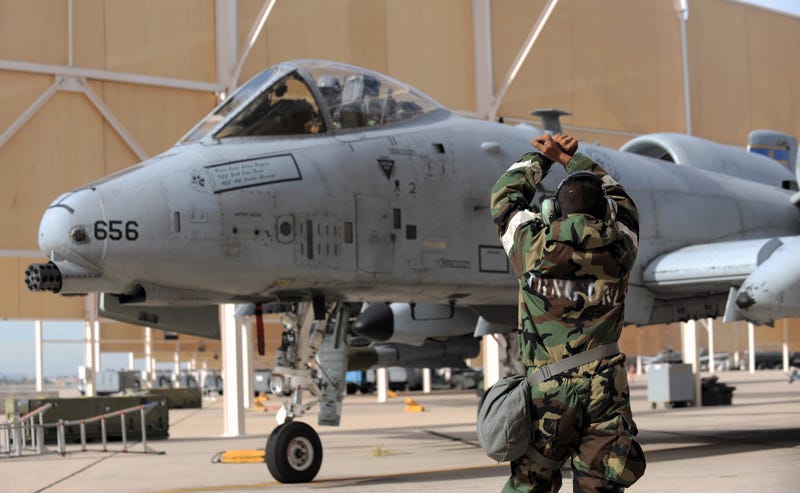
The Air Force likes to say that the A-10 is not survivable in a war against a modern peer-state competitor, or in layman’s terms, a country with power on par with America’s. That is debatable on many levels, but the same can largely be said for the F-16 or F-15.
Additionally, the A-10 still has not reached its survivability potential. The addition of towed decoys, updated jamming pods and directed energy infrared countermeasures, when paired with the A-10’s low-flying mission profile, would likely make them more survivable than any sub 5th generation fighter aircraft. But all this is irrelevant because no American tactical aircraft fights alone, and deploying troops to areas where the enemy has uncontested aerial supremacy is a suicidal tactic.
http://foxtrotalpha.jalopnik.com/the-usafs-rati…
The idea is also laughable that the Pentagon should only buy hugely expensive weapons in vast quantities that are all capable of taking on China or Russia. This may be a great plan for defense contractors but a losing one for the U.S. military.
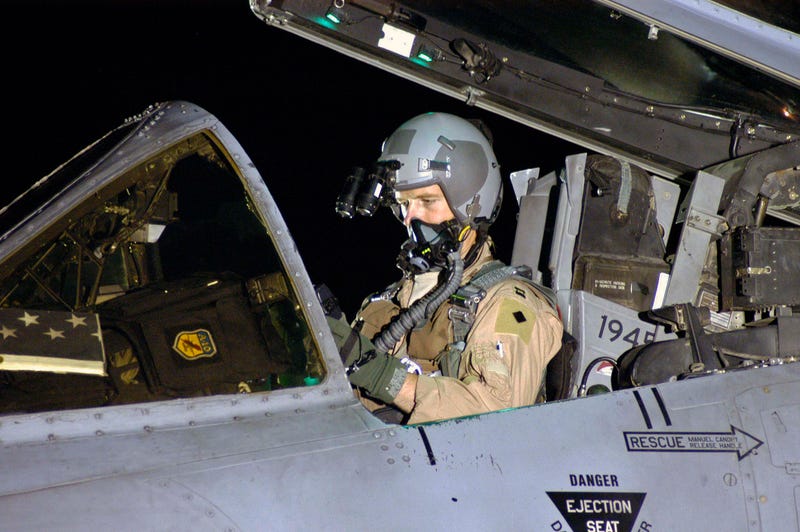
Decades of history tells us that the most probable wars of the future require the A-10’s capabilities far more than the F-35 or other extremely high-end flying weapon system. The A-10 fleet costs less than two percent of the Air Force’s entire budget to operate annually. Surely that is a small price to pay for such an effective and historically useful capability. One that is currently being used to devastating effect against ISIS in the Iraq and Syria and to deter Russian aggression in Europe.
The head of the Senate Armed Services Committee Senator John McCain summed up this absurd situation perfectly in this heated must-watch exchange with the Air Force Chief General Mark Welsh:
Finally, what does the Air Force want to replace the A-10 with? A stealthy A-10? That will never happen. First off, it will cost many tens of billions of dollars to develop and field, if we are lucky, with little added utility in return return. Second, such a program would directly threaten funding for the F-35. Third, it is not needed and the A-10s we have now are just fine for the environments in which they fight.
There is talk that maybe the A-10 would be replaced with a jet fighter-trainer aircraft derivative of the USAF next trainer aircraft that is slated to replace the T-38 Talon, a program that is underway under the name T-X.
This is like replacing the A-10 with an F-16; it makes no sense at all aside from the fact that it is cheaper than buying F-35s and it takes away all comparative advantages that the A-10 provides over 4th generation fighters already in inventory.
Also, although this is a cheaper solution than the fielding F-35s to replace nearly 300 Warthogs in inventory, it is not that cheap. These aircraft will cost tens of millions of dollars to buy and may be only marginally cheaper to operate than the A-10 in the long run.
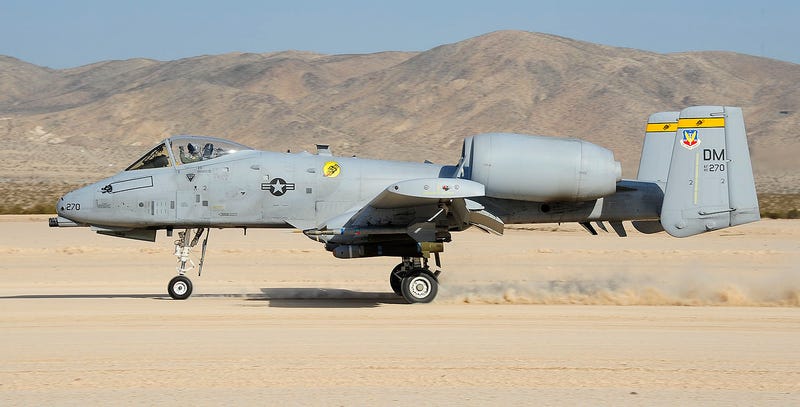
Then there is the other side of the coin: replacing the A-10 with a small turboprop-powered light attack and surveillance aircraft such as the A-29 Super Tucano, an aircraft already in the Air Force’s inventory. A small light attack and surveillance aircraft like the A-29 or OV-10 Bronco is a good addition; in fact, the U.S. should have had throngs of them a decade ago to fight in Iraq and Afghanistan alongside the A-10 and unmanned aircraft instead of flying the wings off our fast-jet fighter fleet.
While these aircraft are efficient and capable, they do not bring nearly the same combat punch or survivability to the fight that the A-10 does. They are strictly low-intensity counter-insurgency aircraft, not tank busters. They also lack the Warthog’s payload and most importantly its cannon, the most precise and deadly aerial fire support tool on any jet in the Pentagon’s stable.
http://foxtrotalpha.jalopnik.com/ov-10-broncos-…
The truth is that there is a need for a light attack and surveillance aircraft, especially for supporting special operations, but not at the cost of the A-10. In fact, they compliment each other very nicely, and would be the ideal team for fighting America’s immediately foreseeable battles.

This leaves us with what will be the most likely replacement for the A-10, the F-35A. These “A-X” shenanigans are likely just a disingenuous route that will take us directly to where the Air Force has been leading Congress all along—to bolstering the F-35 program. As we have discussed many times in the past, yes the F-35 is CAS capable, and will be able to do the job in its own way with good results, but it will never capable of the same quality of close air support that the A-10 provides, nor do the job nearly as economically.
This is not a mark against the F-35; it was never meant to directly replace the A-10 and the Air Force brass were the ones that pitted the two aircraft against one another in the first place.
http://foxtrotalpha.jalopnik.com/major-obvious-…
In all my years of closely watching defense programs and the shady politics that goes along with them, I have never seen a more deliberately dishonest campaign to eliminate a weapon system that is so effective, so efficient and so beloved by those who fly it and who it assists on the battlefield, as well as so feared by the enemy.
Above all else one fact remains uncontested: the only thing that can replace an A-10 Warthog is another A-10 Warthog, no matter how the Air Force tries to spin it.

